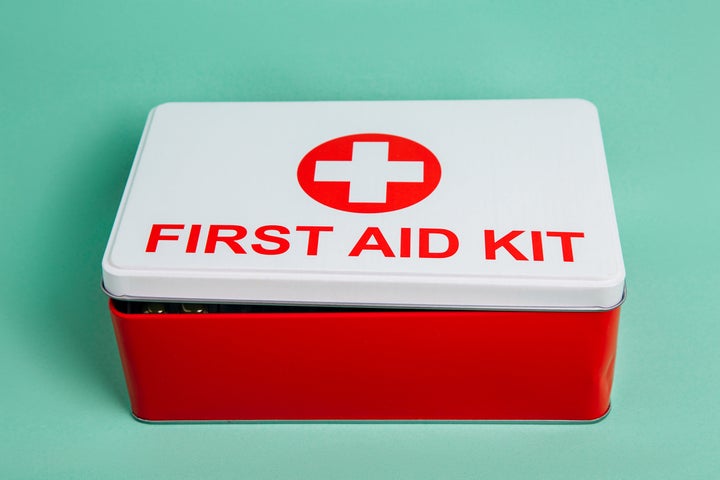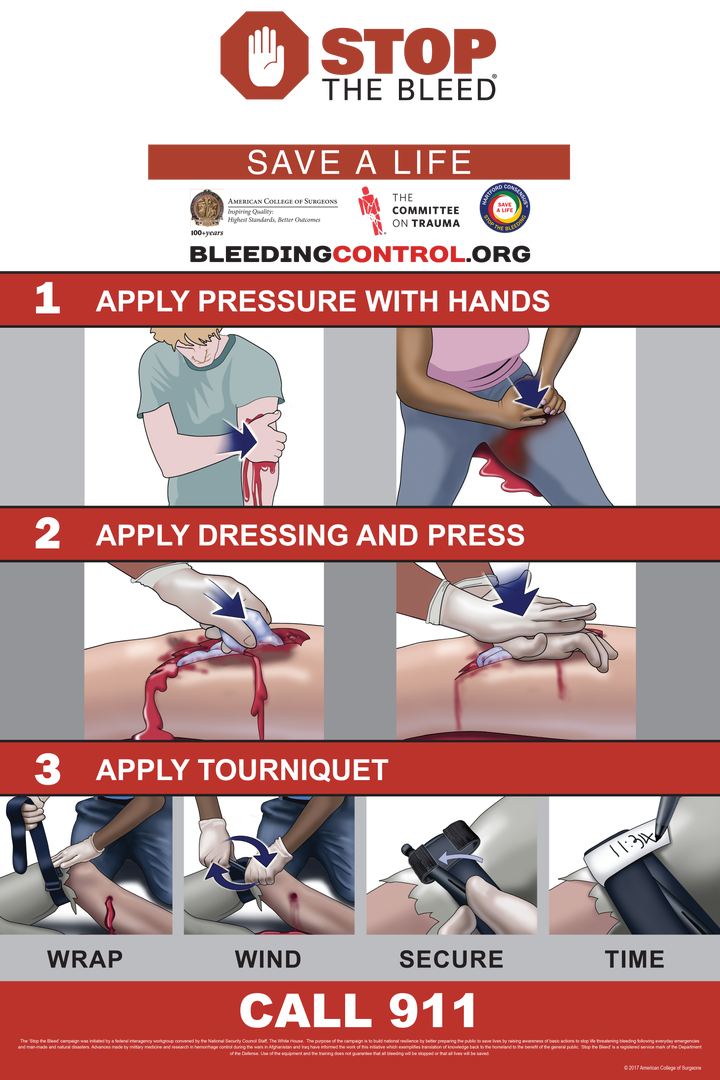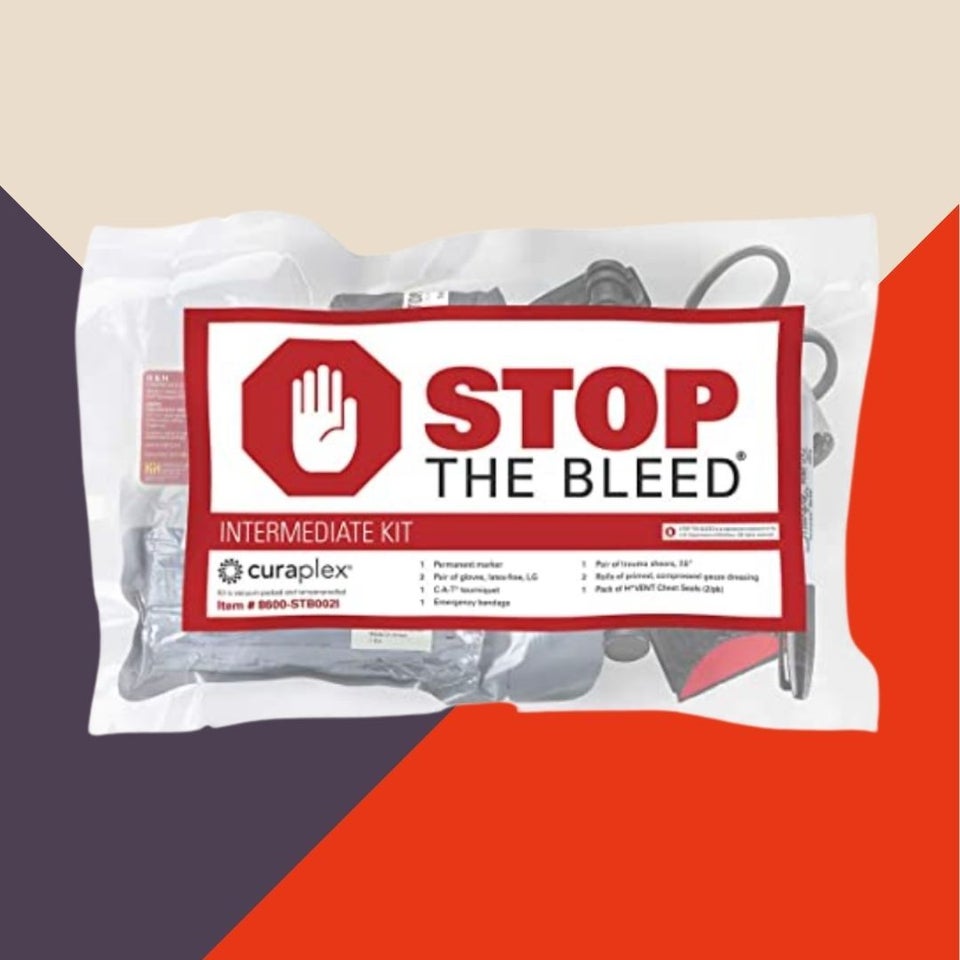
Serious bleeding is not something to ignore; it’s an emergency. External hemorrhaging is the leading cause of preventable death before people get to a hospital, according to The Hartford Consensus, a committee led by U.S. government agencies and medical practitioners to increase survivability from active shooter and mass casualty events.
A mass shooting is one horrible way to suddenly encounter life-threatening bleeding, but more commonly, it can happen in your home or on your commute.
“Bleeding is the number-one preventable thing that kills people after injuries,” said Dr. Kenji Inaba, a trauma surgeon at the University of Southern California’s Keck Hospital and chair of the education committee for the national Stop the Bleed program. “You can be driving along the highway to work and there can be a traffic collision right in front of you. It can happen in someone’s garage when they are working on a woodworking project. It can happen in the kitchen when you are making dinner. It is something that can really happen anywhere.”
Although you may not be an official first responder, anyone can provide lifesaving aid. During mass casualty events, 80% of victims are brought to the hospital by members of the public.
After calling 911, identifying the source of your own or someone else’s bleeding and stemming that flow of blood can be the difference between life and death. Once you recognize that bleeding is severe, you may only have minutes to intervene.
“Every second counts. The earlier we can get an intervention started to stop that bleeding, the more likely we can save a life once the patient arrives to the hospital,” said Inaba. Here’s how to do it:
1. Call 911, and be specific.
Before you start addressing the bleeding in most cases, you should call 911 for help. That way, it won’t be entirely up to you to provide first aid.
As a general principle, Inaba recommends calling 911 as early as possible, but he noted exceptions exist.
“There will be situations where, for example, you are hiking far from the ability to call 911. So in a situation like that, we would ... recommend that someone initiate lifesaving bleeding control measures before hiking out 10 minutes to initiate that 911 call.”
If you can, be more specific than “Help, I have an emergency!” in your call, and give an exact address, said Kyle Bates, director of the paramedic program for the University of Maryland, Baltimore County.
“People panic and they don’t know where they are. ‘I’m at the Walmart.’ Great, which one?” Bates said. “I have been on an ambulance where I’m searching and searching for the person to take care of.”
2. Identify where bleeding is happening and determine if it’s life-threatening.
There’s a difference between a mild injury and a life-threatening situation that you need to address ASAP. If the bleeding you see is continuous, large in volume, or spurting like “a sprinkler,” it is life-threatening, according to Stop the Bleed, which is led by the American College of Surgeons Committee on Trauma.
If you are wondering how much is too much bleeding, try the soda-can volume of measurement. If you see half a soda can’s worth of blood on the person bleeding out, that’s life threatening, according to an instructional video.
Clothing can hide pools of blood, so be sure to check under there, too.
“Always check for multiple sources of bleeding,” especially before putting on a tourniquet, Inaba said. “Even feeling for wetness under clothing can be a very rapid check.”
Inaba offered a scenario in which someone notices a calf injury but does not see an injury between the knee and groin that is hidden by clothes. In this case, he said, putting a tourniquet below the knee could make things worse.
3. Apply direct pressure on the wound.
Once you spot severe bleeding, address it by applying direct pressure to the wound.
“The amount of pressure that’s required is whatever it takes to get that bleeding to stop,” Inaba said. “In the vast majority of cases, the application of pressure can be successful at stopping that bleeding.”
Ideally, you’ll have nitrile or vinyl gloves to protect yourself against bloodborne pathogens, Bates said. But if you don’t have gloves handy, find something like a piece of clothing ― a shirt, perhaps ― to put between your hands and the wound. “If you have gauze, fantastic,” he said.
One common mistake Bates sees people make is when they stop compressing the wound to check if the bleeding has stopped. It’s better to just keep constant pressure on until EMS arrives, he said.
Make sure to keep the bleeding person warm with blankets if necessary.
“Cold blood doesn’t clot,” Bates said. “People who are hypothermic or who are getting cold, they’ll continue to bleed.”
4. Pack the wound if the bleeding area is large.
If the wound is large and deep, applying direct pressure with your hands is not going to be enough. That’s when you want to pack the wound.
Hemostatic gauze is designed to accelerate blood clotting and stop bleeding quickly. If you have it on you or in a nearby first aid kit, that’s an ideal item to pack into the wound.
If you don’t have any gauze, “try the best you can with what you have,” Bates said. “Look for some clean material, something that’s not full of dirt or grime. Maybe a napkin or a paper towel that is clean.”
5. Go straight to a tourniquet if you determine a limb injury is bleeding severely.
There are emergencies for which packing the wound or applying direct pressure is not going to be enough. Sometimes you try those steps, realize they aren’t working and move to a tourniquet. But if you see blood doing what Bates calls “squirt-squirt-squirt,” grab a tourniquet immediately.
“When you see the massive hemorrhage, it’s just pooling out, or it’s hitting the ceilings, and covering the walls ... you are going to bypass all of that and go straight to the tourniquet,” Bates said.
Inaba noted that tourniquets also work in cases where you have an extremity injury and you have to move and can’t keep applying constant direct pressure. “The benefit of the tourniquet is that once it’s applied, you just leave it on and you can remove your hands,” he said.
Keep in mind that tourniquets are meant only for arms and legs; keep applying direct pressure to any wounds on the torso and other parts of the body.
Commercial tourniquets are more effective than those improvised in an emergency. When done right, commercial tourniquets effectively prevent blood loss by compressing the tissues in that area.
“It’s essentially flattening that blood vessel and preventing any of that blood from getting through. By doing that, you are interrupting the flow of blood from the heart to the fingers or the toes and you are stopping the bleeding or the blood loss from that cut vessel,” Inaba said.
Bates said the commonly available combat application tourniquet, or CAT, is “one of the best ones out there.” Both the CAT and SOF tactical tourniquet, called a SOFT-T, are recommended by the American College of Surgeons Committee on Trauma.
If you’re in a public building, you may be able to find a commercial tourniquet in a bleeding control kit next to an automated emergency defibrillator.
Improvised tourniquets should be a very last resort because they are a poor substitute for a commercial tourniquet, but research from mass shootings has shown them to work in emergencies. Bates finds leather belts don’t work because they are not wide enough and do not get tight enough, but he has seen a nylon tie work effectively. A person injured in the 2007 Virginia Tech shooting made an effective tourniquet for his gunshot wound with an electrical cord. First Care Provider, a nonprofit run by veterans seeking to teach the public about first aid, recommends using a carabiner and a key ring if you have to make your own tourniquet.
Here’s how to apply a tourniquet:

Wrap the tourniquet 2 to 3 inches above the injury, and then pull the free end of the tourniquet’s velcro strap, thread it through the buckle, and secure it to the other end.
Wind the windlass rod until you can’t twist anymore and circulation is cut off. Not making the tourniquet tight enough is a critical mistake a lot of people make.
“It’s on right when I no longer feel their pulse. That’s how tight the tourniquet has to be. We don’t want any blood coming in,” Bates said. “A tourniquet is a very painful thing, but it’s much better than bleeding to death.”
Secure the rod by clipping it shut with another velcro strap so your work does not come undone.
Finally, note the time the tourniquet was applied, because leaving a tourniquet on too long can cause tissue damage. Some tourniquets will have a white space where you can write this down easily.
To learn more or become officially trained, take an official Stop the Bleed course in-person or online. You can also ask your local firefighters or EMS group to hold a training, too, Bates suggested.
